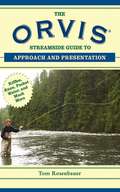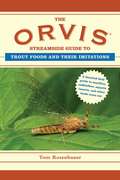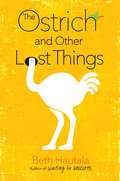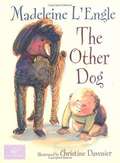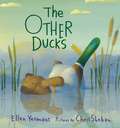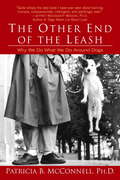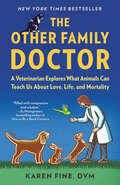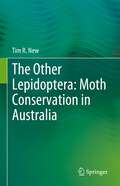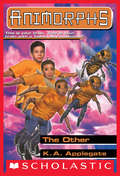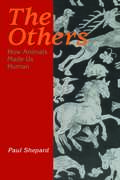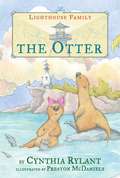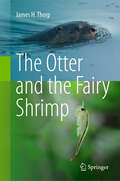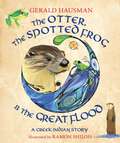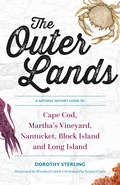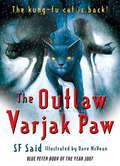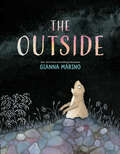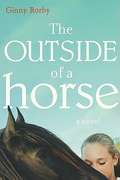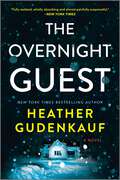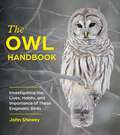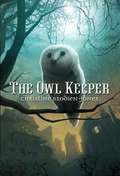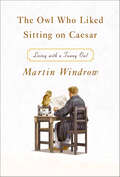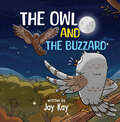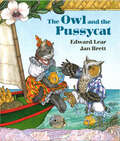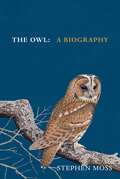- Table View
- List View
The Orvis Streamside Guide to Approach and Presentation: Riffles, Runs, Pocket Water, and Much More (Orvis Guides)
by Tom RosenbauerI know how to cast, I know my knots, and I can tell a dry from a wet fly. What next? This pocket guide shows the fly fisher where to cast, why, and what kind of fly to use. It can be studied prior to a fishing trip or used in the water.Streamers, nymphs, wets, and dry flies are detailed with diagrams and color photographs. The book is organized by water types, and once you identify what kind of water you are facing—riffles, runs, pocket water, or deep slow water—you can then decide what kind of fly to use, what leader is appropriate, and how to present the fly. Chapters cover topics such as:How to enter a poolAngle and attitude of approachMidstream rocksHead, middle, and tail of a poolRiffles and runsEtiquetteAnd much more!No more days of returning without a catch. With the extensive experience and knowledge of author Tom Rosenbauer, you can use his no-nonsense tips to identify appropriate fly-fishing wet and dry flies, adapt to current water conditions, and cast with confidence.
The Orvis Streamside Guide to Trout Foods and Their Imitations (Orvis Guides)
by Tom RosenbauerEvery fly fisher would agree that knowing your mayflies from your stoneflies is strongly correlated with a successful day on the water. This knowledge is vital because, as author Tom Rosenbauer notes, trout are shy and careful and can be fussy about what they eat. In addition, they won't hesitate to swim away and leave a meal if they feel threatened.In The Orvis Streamside Guide to Trout Foods and Their Imitations, Rosenbauer explains how and when to use many types of trout foods, including aquatic insects, terrestrial insects, crustaceans, and more. Designed with both the novice and intermediate fly fisher in mind, Rosenbauer teaches readers how to:Ambush troutIdentify types of insectsPresent trout food properlyObserve what trout are eatingUse imitation trout foodsAnd moreWith The Orvis Streamside Guide to Trout Foods and Their Imitations at their sides, fly fishermen will be able to tell the difference between mayflies, stoneflies, caddisflies, midges, and a variety of other insects. In addition, they will also know when to use real foods and when to rely on the imitations in their tackle boxes.
The Ostrich and Other Lost Things
by Beth Hautala<P>In this beautifully written novel, the bonds and challenges of caring for a sibling with autism are bravely explored, along with the pain and power that comes from self-discovery. <P>Eleven-year-old Olivia Grant has a knack for finding lost things. She can find lost rings, pets, and even her elderly neighbor's misplaced glasses. There's only one thing Olivia has never been able to find--her brother Jacob's toy ostrich. It wasn't until the day Jacob lost his ostrich that Olivia noticed how different he was: Jacob is autistic, and though she's his little sister, Olivia often feels like the older of the pair, his caretaker. And with her parents so heavily focused on maintaining status quo for Jacob, it's Olivia who has stagnated in his shadow--unable to explore new opportunities, or to be her own person. In fact, apart from being Jacob's sister, Olivia's not really sure who she is. <P>So when summer break begins, and the local community theater announces auditions for an all children's production of her favorite show, Peter Pan, Olivia jumps at the chance to claim something for herself. But what begins as a promising opportunity and a wonderful escape quickly becomes pure chaos. The visiting zoo with an odd assortment of animals--including an ostrich that causes even more trouble than Jacob's missing toy--only make matters worse, as Olivia's summer is shaping up to be just as consumed by Jacob's needs as the rest of her life has been. In time, and with the help of some unlikely alliances, Olivia must learn what it means to be separate from her brother and still love him, how to love herself in spite of her own flaws, and that not all lost things are meant to be found.
The Other Dog
by Madeleine L'Engle Christine DavenierTouche L'Engle-Franklin is confused: Her mistress goes away for several days and then returns with another dog. But this dog doesn't have a tail. She doesn't have much hair. And she never has to go outside when it's raining. What on earth could the family want with that inferior breed known as Baby? Based on the true tale of her own poodle's experience coping with a new baby in the house, Newbery-winning author Madeleine L'Engle gives this familiar domestic drama an utterly charming new twist. Tongue-in-cheek wit, endearing illustrations, and a revealing author's note make this a publishing event to celebrate.
The Other Ducks
by Ellen YeomansThis Duck and That Duck were the best of friends. They did everything together but sometimes two ducks just isn’t enough.When This Duck declares that he wishes there were Other Ducks around so they could waddle in a line (a very ducky thing to do), That Duck is quite confused.That is until This Duck and That Duck go swimming, look down, and finally meet The Other Ducks.Unfortunately, The Other Ducks never seem to come out of the water! Oh how This Duck and That Duck wish The Other Ducks would waddle outside the big puddle with them. But it’s getting colder and their feathers are starting to itch for warmer weather.Will these best friends ever find their companions? Join This Duck and That Duck in this witty and heartfelt tale as they discover the world around them.
The Other End of the Leash: Why We Do What We Do Around Dogs
by Patricia B. McconnellThe Other End of the Leash shares a revolutionary, new perspective on our relationship with dogs, focusing on our behavior in comparison with that of dogs. An applied animal behaviorist and dog trainer with more than twenty years experience, Dr. Patricia McConnell looks at humans as just another interesting species, and muses about why we behave the way we do around our dogs, how dogs might interpret our behavior, and how to interact with our dogs in ways that bring out the best in our four-legged friends. <P><P> After all, although humans and dogs share a remarkable relationship that is unique in the animal world, we are still two entirely different species, each shaped by our individual evolutionary heritage. Quite simply, humans are primates and dogs are canids (like wolves, coyotes, and foxes). Since we each speak a different native tongue, a lot gets lost in the translation.<P> The Other End of the Leash demonstrates how even the slightest changes in your voice and the way you stand can help your dog understand what you want. Once you start to think about your own behavior from the perspective of your dog, you’ll understand why much of what appears to be doggy-disobedience is simply a case of miscommunication. Inside you will learn<P> • How to use your voice so that your dog is more likely to do what you ask.<P> • Why “getting dominance” over your dog is a bad idea.<P> • Why “rough and tumble primate play” can lead to trouble–and how to play with your dog in ways that are fun and keep him out of trouble.<P> • How dogs and humans share personality types–and why most dogs want to live with benevolent leaders rather than “alphawannabees!”<P> In her own insightful, compelling style, Patricia McConnell combines wonderful true stories about people and dogs with a new, accessible scientific perspective on how they should behave around each other. This is a book that strives to help you make the most of life with your dog, and to prevent problems that might arise in that most rewarding of relationships.
The Other Family Doctor: A Veterinarian Explores What Animals Can Teach Us About Love, Life, and Mortality
by Karen FineNEW YORK TIMES BESTSELLER • Calling all animal lovers! A heartwarming memoir about one woman's career as a vet and the unique role pets play in our lives • &“Filled with compassion and wisdom, Karen Fine is a healer whose own wounds have deepened her gifts for bringing animals and their people comfort and peace.&” —Sy Montgomery, bestselling author of The Soul of an Octopus A tribute to our furry, feathery, scaley, and wet family members, All Creatures Great and Small meets Being Mortal in this compelling memoir of one woman's dream to become a veterinarian.Karen Fine always knew that she wanted to be a vet and wasn't going to let anything stop her: not her allergy to cats, and not the fact that in the '80s veterinary medicine was still a mostly male profession. Inspired by her grandfather, a compassionate doctor who paid house calls to all his (human) patients, Dr. Fine persevered, and brought her Oupa's principles into her own practice, which emphasizes the need to understand her patients&’ stories to provide the best possible care. And in The Other Family Doctor, Dr. Fine shares all these touching, joyful, heartbreaking, and life-affirming tales that make up her career as a vet. There's:• The feral cat who becomes a creature out of a fable when he puts his trust in a young vet to heal his injured paw• The pot-bellied pig who grows too big to fit in the car but remains a cherished part of her family • The surprising colony of perfectly behaved ferrets• The beloved aging pet who gives her people the gift of accompanying them on one final family vacation• The dog who saves his owner's life in a most unexpected way Woven into Dr. Fine's story are, of course, also the stories of her own pets: the birds, cats, and dogs who have taught her the most valuable lessons—how caring for the animals in our lives can teach us to better care for ourselves, especially when life seems precarious.
The Other Lepidoptera: Moth Conservation in Australia
by Tim R. NewConservation interest in moths, by far the predominant components of Lepidoptera, lags far behind that for butterflies, for which conservation practice provides many well-established lessons for extension to their near relatives. The needs of moths are at least as great, but their greater richness and variety, and far poorer documentation of diversity and biology over much of the world contribute to this lack of attention. Australia’s rich moth fauna, largely endemic and of global interest, illustrates many of the problems of developing wider interest and support for moth conservation. Numerous species (perhaps half the total fauna) are undescribed, and many are ecological specialists in restricted and vulnerable environments over small parts of the continent. Establishing their conservation status and needs whilst accepting that foundation knowledge is highly incomplete and much species-focused conservation is impracticable provides complex problems in setting priorities, based largely on wider diversity and effective advocacy. Most Australian vegetation systems, from grassland to forest and from sea-level to alpine zones, have been eroded in extent and quality since European settlement, resulting in massive habitat changes for native insects and to leave fragmented (and commonly degraded) remnants in which moths and others may persist. Recent surveys continue to increase recorded moth richness, reveal local faunal peculiarities, and indicate how assemblage changes may mirror wider environmental changes. This book is an overview of advances in documenting and interpreting moth diversity and ecology, to show how information from better-studied moth faunas can help in planning conservation of Australia’s moths through measures such as understanding the moths themselves by increased surveys and study, the factors influencing their diversity and wellbeing, and how such threats may be countered through increased coordinated conservation interest, commitment and management.
The Other: The Weakness; The Arrival; The Hidden; The Other (Animorphs #40)
by K. A. ApplegateAx and the Animorphs have always believed Ax was the only non-infested Andalite on Earth. That he alone survived the terrible battle between his people and the Yeerks.Until now.There were other survivors. Other Andalites. And they're here on Earth. Trying to keep a low profile. Trying to find a way to defeat Visser Three. Trying -- like Ax and the Animorphs -- to stay alive until help finally comes.If help finally comes...
The Others: How Animals Made Us Human
by Paul ShepardPaul Shepard has been one of the most brilliant and original thinkers in the field of human evolution and ecology for more than forty years. His thought-provoking ideas on the role of animals in human thought, dreams, personal identity, and other psychological and religious contexts have been presented in a series of seminal writings, including Thinking Animals, The Tender Carnivore and the Sacred Game, and now The Others, his most eloquent book to date.The Others is a fascinating and wide-ranging examination of how diverse cultures have thought about, reacted to, and interacted with animals. Shepard argues that humans evolved watching other animal species, participating in their world, suffering them as parasites, wearing their feathers and skins, and making tools of their bones and antlers. For millennia, we have communicated their significance by dancing, sculpting, performing, imaging, narrating, and thinking them. The human species cannot be fully itself without these others.Shepard considers animals as others in a world where otherness of all kinds is in danger, and in which otherness is essential to the discovery of the true self. We must understand what to make of our encounters with animals, because as we prosper they vanish, and ultimately our prosperity may amount to nothing without them.
The Otter
by Cynthia Rylant Preston McdanielsNewbery Medalist Cynthia Rylant brings the peaceful sounds, sights, and characters of the coast vividly to life in the sixth book of the Lighthouse Family series, in which the family assists an otter in need. On a lovely summer day, the lighthouse family hears the bell on the fog buoy ringing. It is an otter, whose sister is trapped in an old fishing net! With the help of some friendly dolphins and sawfish, the lighthouse family devises a plan to free the trapped otter—and makes two new friends along the way.
The Otter and the Fairy Shrimp
by James H. ThorpThis book presents information on common-to-rare organisms from around the world that inhabit freshwater habitats. The first six chapters focus on organisms from the very small (e.g., protozoa, zooplankton, and fairy shrimp) to the huge (e.g., hippos, freshwater sharks, and giant turtles), while the last four chapters provide information on aquatic ecosystems (lakes, streams, caves, and wetlands). Included in this last section are the physical nature of the system and how that influences the kinds of animals living there. This unique “nature” book, incorporating information from around the world on both aquatic systems and organisms, is written to attract the interest of a wide group of non-academic readers.
The Otter, the Spotted Frog & the Great Flood: A Creek Indian Story
by Gerald HausmanWhen Spotted Frog tells of a great flood that is about to destroy their homes, all of the animals ignore his warnings, except Listener the Otter. Ridiculed by the other animals, Listener heeds Spotted Frog&’s predictions and begins to build a raft to try and survive the impending disaster. But will his efforts be enough?This charming children&’s book warns us to listen to the wisdom of nature and the environment. Based on a traditional story from the Creek Indians of northern Florida and Georgia, this book is retold by award-winning author and storyteller Gerald Hausman, and is brought to life by the powerful images of Ramon Shiloh. This universal tale is imbued with Native American wisdom that is even more prescient now, with the conditions of global warming that threaten our world.
The Outer Lands: A Natural History Guide To Cape Cod, Martha's Vineyard, Nantucket, Block Island, And Long Island
by Dorothy SterlingExperience the unique ecology of the Outer Lands in this reissued classic “An extraordinary achievement in natural history and science. But it’s so artfully written you forget it’s a scientific treatise and find yourself reading it with sheer pleasure.” — Provincetown Advocate Dorothy Sterling explores the fascinating plants and animals that inhabit the peninsulas and islands of the East Coast known as the Outer Lands. With vibrant original drawings by Winifred Lubell and a new foreword by natural historian Robert Finch, The Outer Lands is a lively, lovingly observed biography of place.
The Outlaw Varjak Paw (Varjak Paw #2)
by SF SaidThe second adventure in the life of the extraordinary Mesopotamian Blue, Varjak Paw: kung fu for cats!Having saved the city cats from a fate worse than death, Varjak Paw finds himself the elected and popular leader of a new gang - a gang that supports freedom and kindness for all. But will the pressure take its toll on this brave yet sometimes naive cat?Soon the city erupts in an all-out gang war as the evil Sally Bones attempts to control the lives of all cats. Horrified and outnumbered, Varjak and the others must fight for their freedom or die trying; can Jalal's Way really be the best way?This is another thrilling adventure, eagerly awaited by all Varjak fans, both young and old.Winner of the Blue Peter Award in 2007
The Outside
by Gianna MarinoNew York Times bestselling illustrator Gianna Marino helps little ones find their courage to face their fears and explore the world around them.Earl likes the inside and likes feeling safe. He also likes his friends to be safe and is quick to point out the many dangers of the outside, where his friends are determined to explore. No matter how hard they try to convince Earl to come outside to play, he won&’t change his mind.But…what if Earl needs to go outside? What will it take for his friends to convince him? What will it take for Earl to feel safe on the outside?In this stunningly illustrated book about friendship, facing your fears, and finding the courage to push past what&’s comfortable, Gianna Marino once again uses endearing animals to give young readers a voice.
The Outside of a Horse
by Ginny RorbyHannah Gale starts volunteering at a horse stable because she needs a place to escape. Her father has returned from the Iraq war as an amputee with posttraumatic stress disorder, and his nightmares rock the household. At the stable, Hannah comes to love Jack, Super Dee, and Indy; helps bring a rescued mare back from the brink; and witnesses the birth of the filly who steals her heart. Hannah learns more than she ever imagined about horse training, abuse, and rescues, as well as her own capacity for hope. Physical therapy with horses could be the answer to her fatherÕs prayers, if only she can get him to try.
The Overnight Guest: A Novel
by Heather GudenkaufNEW YORK TIMES BESTSELLER&“Fully realized, wholly absorbing and almost painfully suspenseful...The journey is mesmerizing.&” —New York Times A woman receives an unexpected visitor during a deadly snowstorm in this chilling thriller from New York Times bestselling author Heather Gudenkauf.True crime writer Wylie Lark doesn&’t mind being snowed in at the isolated farmhouse where she&’s retreated to write her new book. A cozy fire, complete silence. It would be perfect, if not for the fact that decades earlier, at this very house, two people were murdered in cold blood and a girl disappeared without a trace.As the storm worsens, Wylie finds herself trapped inside the house, haunted by the secrets contained within its walls—haunted by secrets of her own. Then she discovers a small child in the snow just outside. After bringing the child inside for warmth and safety, she begins to search for answers. But soon it becomes clear that the farmhouse isn&’t as isolated as she thought, and someone is willing to do anything to find them.Don&’t miss Heather&’s upcoming twisty locked-room thriller, EVERYONE IS WATCHING! And don't miss these other great stories by Heather!The Weight of SilenceThese Things HiddenLittle MerciesMIssing PiecesNot a SoundBefore She Was FoundThis is How I Lied
The Owl Handbook: Investigating the Lives, Habits, and Importance of These Enigmatic Birds
by John SheweyCharismatic, intriguing, and misunderstood: The Owl Handbook provides a beautifully photographed, thoughtfully researched, and accessible guide to these complex, captivating creatures. Spot an owl that&’s long been watching your every move and darker aspects of its reputation may spring to mind: harbinger of doom, guides through the spirit world, merciless bird of prey. Mythology and superstitions have projected our fear of the unknown onto these mostly night-dwelling creatures. But these wondrous birds are so much more than shadows or silent glides through the night. In The Owl Handbook, lifelong birding enthusiast John Shewey leads us through an exploration of owls&’ cultural impact as seen in folklore and mythology, provides in-depth investigations of 19 owls of North America and a survey of 200 owls across the globe, and gives advice on how to respectfully observe and protect these enigmatic birds, brought to life by hundreds of full-color photographs.
The Owl Hoots Twice at Catfish Bend
by Ben Lucien BurmanThe Gayest Book of 1961! When Seven Stars for Catfish Bend appeared after the widely acclaimed High Water at Catfish Bend it was greeted by excited reviewers as a new Alice in Wonderland, a new Wind In The Willows. Now Ben Lucien Burman has written a third story even more delightful in its fantasy and rich humorous imagination--The Owl Hoots Twice at Catfish Bend. Like Lewis Carroll's immortal classic, it is at once a genial satire on the absurdities of our time, a rich entertainment that keeps the reader chuckling with every paragraph, and a wonderful adventure story. It is the tale of a wolf in fox's clothing and of the terrible havoc he works when the innocent and peaceful animals of Catfish Bend, always ready to help a fellow creature, rescue him from his pursuers, and then listen to his evil advice. Here again is the famous Judge Black, the kindly, motto-quoting blacksnake, who is a vegetarian and is always trying to live down the snake family's bad name; here is the elderly frog who patiently conducts the young frogs of the Indian themselves in its magic and enchantment. The beguiling illustrations by Alice Caddy, the author's wife, are a perfect accompaniment to the charm of the story.
The Owl Keeper
by Christine Brodien-JonesMaxwell Unger loved the stories his gran told him about the world before the Destruction--about nature, and books, and the silver owls. In times of darkness, the Owl Keeper would appear to unite owls and sages against the power of the dark. The time of the Owl Keeper is coming soon. Illustrations.
The Owl Who Liked Sitting on Caesar: Living with a Tawny Owl
by Martin WindrowThis memoir of the relationship between a British military historian and a Tawny Owl is “a small masterpiece of animal literature . . . [a] perfect book” (The Wall Street Journal).Mumble was so much a part of my life in those days that the oddity of our relationship seldom occurred to me, and I only thought about it when faced with other people’s astonishment. When new acquaintances learned that they were talking to a book editor who shared a seventh-floor flat in a South London tower block with a Tawny Owl, some tended to edge away, rather thoughtfully . . . I tried to answer patiently, but I found it hard to come up with a short reply to the direct question ‘Yes, but . . . why?’; my best answer was simply ‘Why not?’Martin Windrow was a war historian with little experience with pets when he adopted an owl the size of a corncob. Adorable but with knife-sharp talons, Mumble became Windrow’s closest, if at times unpredictable, companion, first in a South London flat and later in the more owl-friendly Sussex countryside. In The Owl Who Liked Sitting on Caesar, Windrow recalls with wry humor their finer moments as well as the reactions of incredulous neighbors, the awkwardness of buying Mumble unskinned rabbit at Harrods Food Hall, and the grievous sense of loss when Mumble nearly escapes. Windrow offers a poignant and unforgettable reminiscence of his charmed years with his improbable pet, as well as an unexpected education in the paleontology, zoology, and sociology of owls.“A memoir of his friendship with this singular creature, interwoven with a natural history of her species . . . [It] is all the more affecting because of its gruff understatement.” —The New York Times Book Review“Pure joy. Martin Windrow shows us the essence of a wild animal in a story as informative as a scientific paper on the species Strix aluco, but much more fun to read.” —Elizabeth Marshall Thomas, author of A Million Years with YouIncludes photographs and illustrations
The Owl and the Buzzard
by Jay KayIn a world full of wonders and wonders, oh my, Watch the owl and the buzzard Teach the world how to fly. With exceptional wings and their magical flight, Incredible things will happen at night. So follow your dreams, in a world that’s so rare, Who knows the things you can do if you dare?
The Owl and the Pussycat (Paul Galdone Classics Ser.)
by Edward LearOwl sets out to woo Pussycat in a boat laden with fruit from their Caribbean island and with a guitar at his side, ready for serenading. As they sail off across the sea, another story unfolds in the water beneath the boat. One by one, exotic sea creatures swim into the picture and small yellow fish seems to be looking for someone. Jan Brett brings the magic of the Caribbean to her exquisitely detailed illustrations of Edward Lear&’s charming poem.
The Owl: A Biography (The Bird Biography Series #5)
by Stephen Moss'BEAUTIFULLY, A BOOK ABOUT BIRDS' The Sunday Times | 'ENGAGING AND EYE-OPENING' The Countryman Uncover the life of owls through this beautiful guide to these secretive and charismatic birds from the bestselling author of The Robin, The Wren, and The Swan.Owls are among the most mysterious birds in the world. Their hauntingly beautiful calls and mostly nocturnal habits have long captured our collective imagination, inspiring more superstitions, folktales, and myths than any other group of birds. Seven species of owl - the tawny, little, barn, long-eared, short-eared, snowy and eagle owl - can be found in the British Isles (out of sixteen different kinds across Europe). They have lived alongside people for thousands of years, yet we still know so little about their day-to-day lives.Discover their fascinating lives, from the moment they first hatch, to the way they hunt their prey and how they raise the next generation. Explore the rich folklore they've inspired around the world and learn how, with a bit of luck, you can catch a glimpse of them yourself.With beautiful illustrations throughout, and expert birdwatching tips, this eye-opening biography reveals the hidden secrets of one of the world's most famous and beloved birds.
